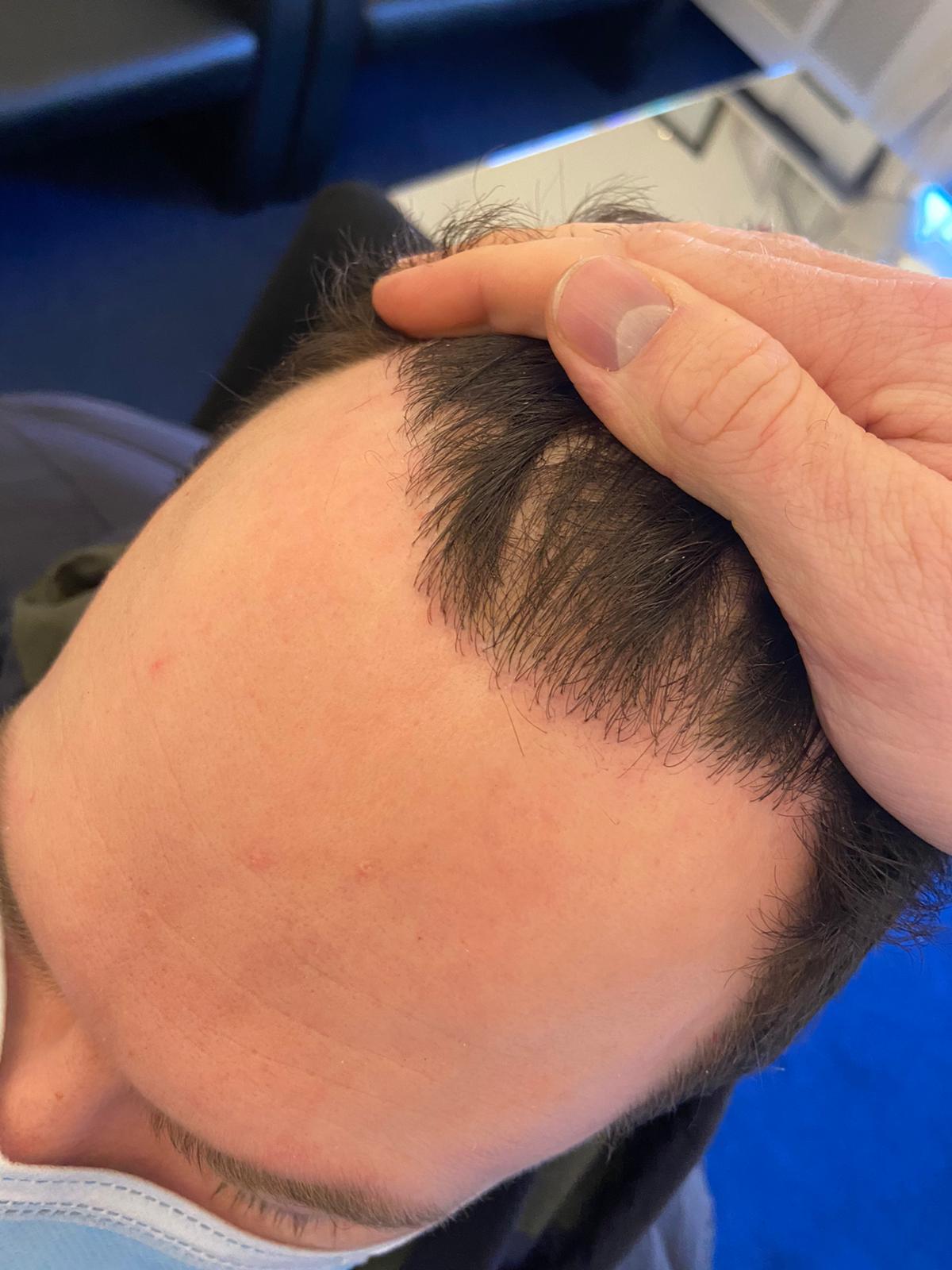Hair transplantation aims either to restore androgenetic alopecia or to aesthetically improve the scalp mainly at the level of the frontal hairline. In any case, the restoration of the frontal hairline is a necessity.
The points that need special attention during the restoration are the following:
- The shape of the hairline
- The height of the hairline
- The joining of the frontal hairline with the lateral temporal areas
- The formation of the strictly first line of hairs in terms of density, type of the implanted hair follicle grafts and its irregularities
- In the case of androgenetic alopecia the factors that are taken into consideration when restoring the hairline, are:
• The age of the patient
• The present grade of androgenetic alopecia
• The possible development of androgenetic alopecia in the future
• The present recess of the temporal areas
The hairline should be shaped in such a way as to match the overall image of the patient in relation to his developing alopecia, taking into account his age.
In advanced androgenetic alopecia the main goal is the improvement of the grade of the alopecia. It is very important to properly connect the frontal with the temporal hairline at such a height so that it doesn’t look unnatural from the sides.
In onset alopecia, the idea is that the new hairline is consistent with the chances of development of the alopecia based on the patient’s family history and the clinical condition of the scalp.
- In the case of aesthetic restoration:
• The sex of the patient
• The shape of the forehead
• The hair styling habits
The hairline is shaped in such a way as to match both the face and the forehead of the person concerned as well as the original density of the scalp.
In general, the main differences between female and male hairline concern the following:
- Its shape: in men when restoring androgenetic alopecia it is usually curved in the lateral temporal areas (maintenance of the temporal recesses as in grade I Norwood), while it may be straight when restoring a stable small grade of alopecia or in case of an aesthetic restoration On the contrary in women it is always straight following of course the natural curve of the forehead.
- Its height: in men when restoring androgenetic alopecia the height depends on the grade of the alopecia and its possible future development. That is why it will probably be high and definitely above its original height. During the aesthetic restoration (either in men or in women), the hairline can be at its original height, as long as the natural border between the scalp and the forehead is assessed and not exceeded.
- Its general configuration: as a rule the female hairline does not present neither the triangular areas (temporal angles) above the level of the sideburns nor the small central protrusion (widow’s pick) in the middle of the frontal hairline. It should be noted that there are exceptions in women who present a more male hairline shape, which is a possible reason why they seek its restoration. In men, the restoration of these special areas can be done taking into account their expectations, the shape of the face as well as the peculiarity of the hair growth at these areas. It is also very important in every case to achieve symmetry between the two halves of the frontal hairline.
- The shape of the irregularities of the strictly first line of hair: in women the protruded asymmetrical projections are usually softer than in men and not so strongly apparent. The formation of these projections is absolutely necessary so that there is no doll image on the frontal hairline. This way the restored hairline resembles as much as possible the microasymmetries of the natural hairline.
- Its density: in an aesthetic restoration (as mainly in women but also in men with small and stable grade of alopecia), the restoration of the hairline zone must be done with a maximum implantation density right from the beginning in order to match the original hair density. However, in case of a high grade of androgenetic alopecia when the entire anterior zone A is restored, the implantation density usually is done in a pattern of an increasing density gradation going from front to back. Therefore the whole hairline zone is restored thinner compare to the rest of the zone A.
Restoring a natural hairline is a challenge for the doctor and requires knowledge and medical experience in order to maintain balance between the naturalness of the area and the patient’s expectations.



